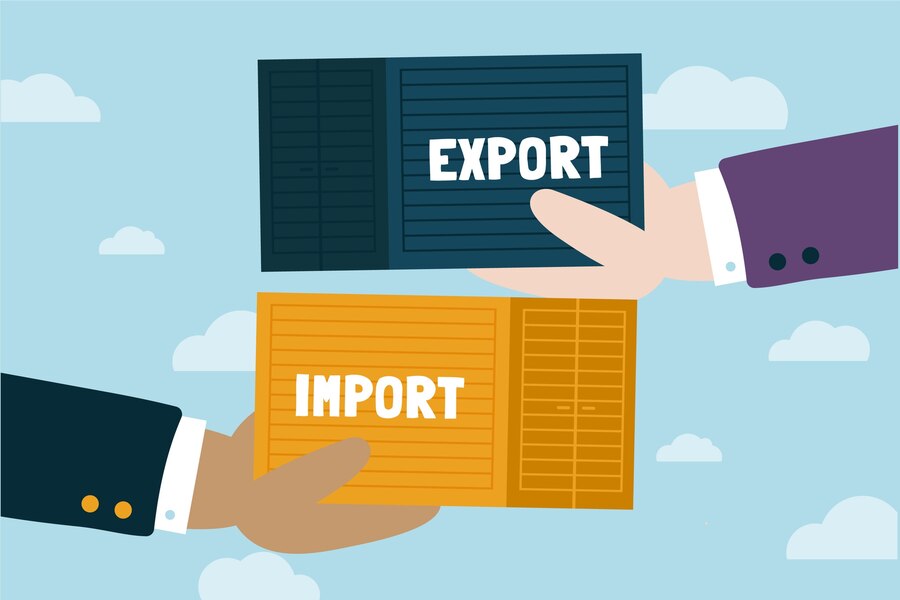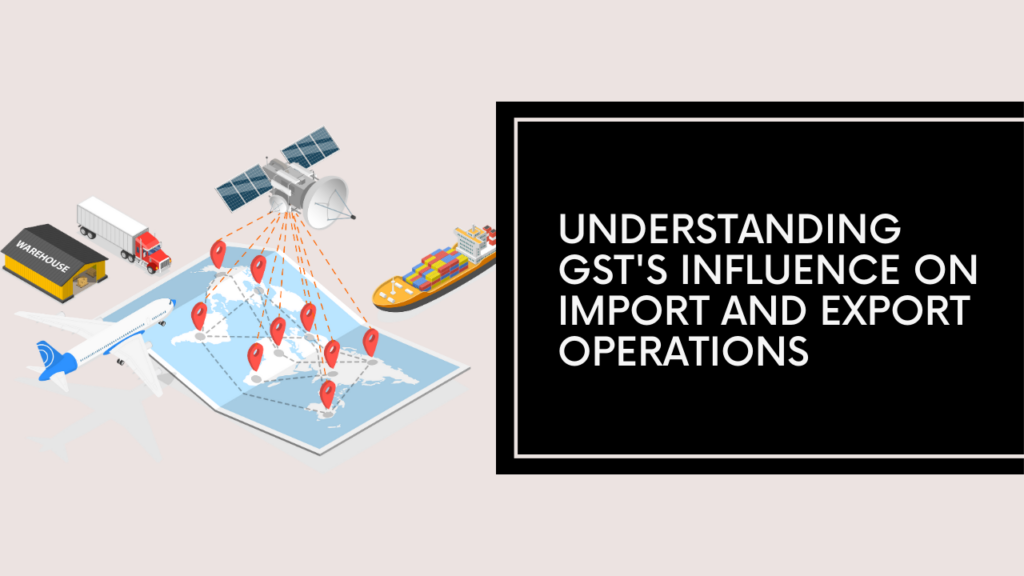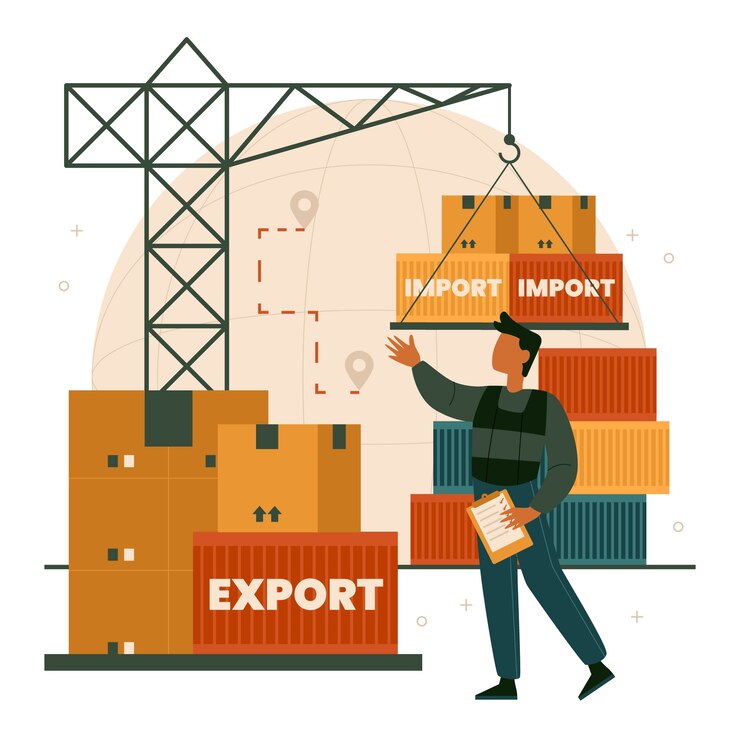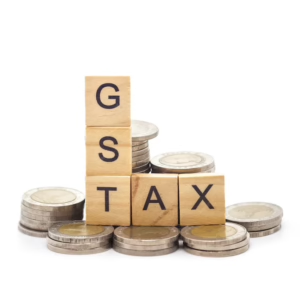Impact of GST on Import and Exports in India: Read Now
- 10 Aug 24
- 19 mins

Impact of GST on Import and Exports in India: Read Now
- GST and Its Components
- Import of Goods and Services Under GST
- How are Imports Treated Under GST?
- Zero-rated Supplies/Export of Goods and Services
- How are exports treated under GST?
- GST Impact on Export Business
- Procedure to set up an export-import unit in India
- The Role of Tax Returns and Exemptions
- The Role of Exemptions for Import & Export
- Conclusion
Key Takeaways
- Unified Tax System: GST has consolidated various indirect taxes into a single, uniform system, greatly simplifying the tax landscape.
- IGST Facilitation: The implementation of IGST ensures that taxes are collected in the consumption state, promoting equity and transparency across interstate transactions.
- Advantages of ITC: The ITC mechanism under GST has been instrumental in negating the cascading effect of taxes, providing businesses with the opportunity to claim credits for taxes paid on inputs.
- Impact of GST on Import and Export: GST's treatment of imports & exports, subjecting them to IGST and allowing for ITC claims, has improved the cost-effectiveness and competitiveness of imported goods and services.
The Goods and Services Tax (GST) regime, which was rolled out in India in July 2017 and is built on the singular perspective of making the economy more robust through one source of taxation, has been a vital reform in the Indian tax structure. This fugacious change definitely impacted the activity of import and export businesses, that simplified the tax system but also brought together novel problems.
This article deals with immensely significant influences of GST on imports and exports in India and explores in details integrated goods and services tax (IGST), Input Tax Credit (ITC), zero-rated supplies and others.

GST and Its Components
GST, or Goods and Services Tax, is a comprehensive, multi-stage tax imposed on the supply of goods and services in India. It replaces multiple indirect taxes that were separately paid to both the central and state governments with this indirect tax, which is a single rationalised taxation procedure, making it transparent.
GST is a destination-based tax, meaning it is collected from the point of consumption rather than the point of origin. This section explores two critical components of GST: Integrated Goods and Services Tax (IGST) and Input Tax Credit (ITC).
Integrated Goods and Services Tax (IGST)
IGST is a component of GST that is applied to the interstate supply of goods and services, as well as imports into India. The primary purpose of IGST is to ensure that tax is collected in the state where the goods or services are consumed, not where they are produced. It helps maintain a seamless national market by transferring the tax credits from one state to another. This mechanism ensures that the final consumer bears the tax, promoting fairness and transparency in the taxation of goods and services across different states.
IGST is charged when a product or service is transported from one state to another. The revenue collected under IGST is shared between the central and state governments as per the regulations established by the GST council. This system simplifies interstate trading for businesses by producing one set of rules that they can follow instead of trying to deal with the complex state tax laws.
Input Tax Credit (ITC)
Input Tax Credit is a mechanism within the GST framework that allows taxpayers to claim credit for the tax paid on the purchase of goods and services that are used for business purposes.
ITC is a fundamental feature of GST that prevents the cascading effect of taxes, where tax is levied on tax. By enabling businesses to reduce their tax liability by the amount of GST paid on inputs, ITC ensures that the end consumer is the only one effectively bearing the tax.
ITC can be claimed for the GST paid on raw materials, services, and capital goods that are used in the production or supply of taxable goods and services. However, there are certain conditions and restrictions for availing ITC, such as the necessity for the goods and services to be used for business purposes, possession of a tax invoice, and timely filing of GST returns.
ITC improves efficiency levels of production and distribution of goods and services, which leads to a decrease in prices, thus contributing greatly to the overall development of economies.
Import of Goods and Services Under GST

Under the Goods and Services Tax (GST) framework in India, the import of goods and services is treated with a specific structure designed to integrate seamlessly with the country's unified tax system. This system impacts the import business significantly, altering the way The following article will examine the treatments of imports and issues faced by importers within the GST framework.
How are Imports Treated Under GST?
Imports of goods and services into India are considered as inter-state supplies and are subject to Integrated Goods and Services Tax (IGST). IGST is levied on the value of imported goods or services, in addition to any applicable customs duties. The customs duty is not subsumed under GST; it is charged separately as per the Customs Act. However, the IGST paid on imports is available as input tax credit (ITC), which the importer can utilize to offset their GST liabilities on their onward supplies.
For goods, the IGST rate applied is the same as that of the domestic supply of similar goods. This treatment ensures that imported goods are taxed at the same rate as domestically produced goods, maintaining a level playing field between domestic and foreign suppliers. For services, the place of supply rules determine the taxability of the service imported into India. Generally, the place of supply for services imported into India is considered the location of the recipient of services.
Therefore, the importer is required to pay IGST on such imported services under the reverse charge mechanism, where the recipient of the service is liable to pay the service tax.
GST Impact on Import of Service & Business
- Input Tax Credit (ITC) Mechanism: One of the significant impacts of GST on the import business is the availability of ITC for the IGST paid on imports. This provision allows importers to recover the IGST paid on imported goods and services, which can be used to offset their GST liabilities on their sales within India. This mechanism improves cash flow and reduces the overall cost of imports for businesses.
- Increased Compliance and Documentation: Under GST, importers are required to adhere to specific compliance requirements, including the filing of import documentation and GST returns. The need for accurate classification of goods and services for GST purposes, along with the requirement to maintain detailed records for claiming ITC, has increased the compliance burden on import businesses.
- Reduction in Cascading Effect of Taxes: Prior to GST, imported goods were subject to multiple taxes, including customs duty, countervailing duty (CVD), and special additional duty (SAD), leading to a cascading effect of taxes. With the introduction of GST, the CVD and SAD were subsumed under IGST, reducing the cascading effect and potentially lowering the cost of imported goods.
- Price Competitiveness: The ability to claim ITC on the IGST paid on imports can make imported goods more price-competitive in the domestic market. Since the tax component can be utilized to offset GST liabilities on domestic sales, the effective cost of the imported goods may decrease, making them more competitive against domestically produced goods.
- Increased Transparency: The GST regime has brought about increased transparency in the taxation of imports. The uniform application of IGST across all states simplifies the tax structure and makes it easier for businesses to understand their tax obligations on imported goods and services.
Under the Goods and Services Tax (GST) regime in India, exports are treated as zero-rated supplies. This treatment is designed to boost the country's exports by making Indian goods and services more competitive on the global stage. This zero-rating of exports under GST has profound implications for businesses engaged in exporting goods and services out of India. Here's an in-depth look at how exports are treated under GST and the impact this has on the export business.
Zero-rated Supplies/Export of Goods and Services
Zero-rated supplies refer to goods and services that are exported out of India, including supplies made to Special Economic Zones (SEZs), which are taxed at a rate of 0% under GST.

This means that exporters can ship their goods or provide services without having to pay GST on such exports. The rationale behind this treatment is to ensure that Indian goods and services are not more expensive due to tax costs when entering the global market, thus maintaining their price competitiveness.
How are exports treated under GST?
- Refund of Input Tax Credit (ITC): Exporters can claim a refund of the GST paid on inputs (goods and services used to make the export product) since the output is taxed at 0%. This mechanism ensures that the tax cost does not get embedded in the export prices, making Indian exports more competitive internationally.
- Export Under Bond or Letter of Undertaking (LUT): Exporters have the option to export goods or services under a bond or LUT without paying IGST. Later, they can claim a refund of the input tax credit, which helps in maintaining liquidity and working capital.
- Payment of IGST and Refund: Alternatively, exporters can choose to pay IGST on their exports and then claim a refund of the IGST paid. This option is less commonly used since it involves an outflow of cash, which could impact the exporter's cash flow.
GST Impact on Export Business
- Enhanced Competitiveness: The zero-rated policy under GST significantly enhances the competitiveness of Indian exports by ensuring that the tax burden does not add to the cost of exported goods and services.
- Improved Cash Flow: By allowing the refund of ITC on inputs used for manufacturing exported goods, GST helps in improving the cash flow for exporters. This is crucial for businesses to manage their operations and financial health.
- Simplified Tax Structure: GST has simplified the tax structure for exports by consolidating multiple taxes into a single tax regime. This simplification has reduced the compliance burden and made it easier for exporters to conduct their business.
- Increased Compliance Requirements: While GST has simplified the tax regime, it has also increased the compliance requirements, with exporters needing to maintain detailed records and file returns to claim ITC refunds. This increased compliance can be a challenge for small and medium enterprises (SMEs) with limited resources.
- Faster Refund Process: The GST regime has introduced mechanisms to ensure the faster processing of refunds for exporters, aiding in the quick recovery of input taxes and helping businesses maintain liquidity.
- Challenges in Refund Mechanism: Despite the improvements, some exporters face challenges with the refund mechanism, including delays and complexities in the processing of refunds. This can temporarily tie up working capital, affecting business operations.
Procedure to set up an export-import unit in India
Setting up an export-import unit in India involves a series of steps, from initial registration to obtaining the necessary licenses and adhering to the legal framework. Similarly, the export-import documentation process is crucial for smooth operations, compliance, and ensuring that transactions are carried out efficiently.
Here's a comprehensive guide to help you understand these processes: Setting Up an Export-Import Unit in India
Step 1: Obtain a PAN Card: The first step is to obtain a Permanent Account Number (PAN) from the Income Tax Department, as it's mandatory for all exporters and importers in India.
Step 2: Select Your Business Structure: Decide on the type of business entity (e.g., sole proprietorship, partnership, LLP, or company). This decision will affect your tax implications, liability, and registration process.
Step 3: Open a Current Account: Open a current account with a bank authorized to deal in foreign exchange. This account will be used for all transactions related to your export-import business.
Step 4: Obtain the Import Export Code (IEC): Apply for an IEC from the Directorate General of Foreign Trade (DGFT). This code is a must for anyone involved in importing or exporting goods and services from India. The process can be completed online through the DGFT website.
Step 5: Registration and Membership Certificate (RCMC): After obtaining the IEC, apply for RCMC from the relevant Export Promotion Councils (EPC) or commodity boards. This certificate will enable you to benefit from various schemes and subsidies.
Step 6: Goods and Services Tax Identification Number (GSTIN): Register for GST to obtain a GSTIN. It's necessary for businesses involved in the supply of goods and services in India and/or involved in the import and export of goods.
Step 7: Understand the Legal Requirements: Familiarize yourself with the Foreign Trade Policy (FTP), Customs Act, and other relevant laws and regulations governing export-import activities in India.
Step 8: Product Selection and Market Research: Conduct thorough market research to select the right products for export or import based on current trends, demand, and competition.
Step 9: Find Buyers/Sellers: Participate in trade fairs, use online marketplaces, and network to find potential buyers or sellers for your products.
Step 10: Logistics and Supply Chain Management: Establish logistics for transporting goods, including selecting reliable shipping partners and understanding the costs involved.
Export-Import Documentation in India
The essential documentation required for both exporting from and importing into India
| Document | For Export | For Import |
|---|---|---|
| Commercial Invoice | Details the value of goods, terms of sale, and payment conditions. | From the overseas supplier, detailing the cost of goods. |
| Packing List | Lists the contents of each package, including types and quantities. | Same as for export, detailing the contents of each package for the recipient. |
| Shipping Bill/Bill of Entry | Required for customs clearance before shipment; filed electronically. | Submitted to customs for clearance of goods upon arrival. |
| Bill of Lading or Airway Bill | A contract between the owner of the goods and the carrier. | As for export, a contract between the owner of the goods and the carrier details the terms of transport. |
| Certificate of Origin | It certifies the country in which the goods were manufactured. | To verify the source of goods, confirming their origin. |
| Export/Import License | For specific items under restriction, indicate permission to export. | For restricted goods, indicating permission to import. |
| Insurance Certificate | It insures the shipment against loss or damage. | Same as for export, insuring the shipment against loss or damage. |
| Inspection Certificate | It is required for certain products to confirm they meet the importing country's standards. | Not typically required for imports unless specified by the importer or regulations. |
| Industrial License | Not applicable for exports. | For items that require government approval before importation. |
Major Importing Industries in India
Historically, India's major importing industries have included:

- Crude Oil and Petroleum Products: India is a significant importer of crude oil due to its limited domestic reserves and high demand from its growing economy. This sector often tops the list in terms of value.
- Electronics: With the increasing demand for electronic goods, including smartphones, computers, and other electronic devices, imports in this category have seen substantial growth.
- Gold and Precious Metals: India is one of the largest importers of gold, primarily for jewelry manufacturing and investment purposes.
- Chemicals: The import of various chemicals for agriculture, pharmaceuticals, and manufacturing sectors is substantial due to the domestic industry's inability to meet the total demand.
- Machinery and Equipment: This includes a wide range of machinery for industries, agriculture, and construction, as well as for office and household use.
Major Exporting Industries in India
On the export front, India's major industries have been:
- Petroleum Products: Refined petroleum products are one of India's top exports, thanks to its sophisticated refining industry.
- Gems and Jewelry: India is known for its diamond processing and jewelry manufacturing, making this sector a significant contributor to its export earnings.
- Pharmaceuticals: India, known as the "pharmacy of the world," is a leading exporter of generic drugs globally.
- Software and IT Services: India's IT industry is a major contributor to its export earnings, providing software and services to companies worldwide.
- Textiles and Garments: The textiles and garments industry is another traditional area of strength for India, with a wide range of products exported globally.
- Agricultural Products: This includes a variety of products like rice, spices, tea, and more, with India being one of the world's largest producers and exporters of agricultural products.
The Role of Tax Returns and Exemptions
The Goods and Services Tax (GST) system in India, designed to streamline the country's tax framework, significantly emphasizes the role of tax returns and exemptions from income tax. These elements play a crucial role in ensuring compliance, facilitating the efficient collection of taxes, and providing relief to certain sectors and income groups. Understanding these aspects can help businesses and individuals navigate the GST regime more effectively.
The Role of Tax Returns
- Compliance and Reporting
Tax returns under GST serve as a primary tool for compliance and reporting. Businesses are required to file monthly, quarterly, or annual returns, depending on their turnover and the type of taxpayer they are.
These returns detail sales, purchases, tax collected on sales (output tax), and tax paid on purchases (input tax). The filing of tax returns is imperative for keeping the tax system clear and bringing accurate tax liability and debts.
- Input Tax Credit (ITC) Reconciliation
Filing returns also facilitates the reconciliation of input tax credit. Businesses can claim ITC on the GST paid on inputs, input services, and capital goods used for business purposes.
The process of filing returns includes detailing the input tax credits to be claimed, ensuring that businesses only claim the correct amounts and maintain a seamless flow of credits throughout the supply chain.
- Refund Processing
For businesses, especially exporters who deal with zero-rated supplies, filing gst returns is essential for the processing of tax refunds. The GST system does the trick by allowing the exporters to claim this input tax credit, which is vital for the preservation of liquidity and operational efficiency.
The Role of Exemptions for Import & Export

- Reducing the Cost for Consumers
GST exemptions play a significant role in reducing the cost of essential goods and services for consumers. Certain goods and services considered essential, such as healthcare services, education, and basic food items, are exempt from GST. This ensures that the price of these necessities remains low for the general population.
- Supporting Small Businesses
The GST regime offers a composition scheme for small businesses with a turnover below a specific threshold, allowing them to pay tax at a reduced rate and file returns quarterly instead of monthly. This exemption reduces the compliance burden on small businesses, helping them to focus on their operations rather than on complex tax procedures.
- Encouraging specific sectors
Exemptions under GST also target specific sectors that the government aims to promote. For example, the government may exempt GST on goods and services related to renewable energy, agriculture, or startups to encourage growth and investment in these sectors.
- Simplifying the Tax Structure
By exempting certain goods and services from GST, the tax structure is simplified for consumers and businesses alike. This reduces the administrative burden on businesses related to tracking and documenting taxes on small-ticket or exempt items.
Conclusion
The GST framework has changed the whole structure of India's tax system, looking into simplifying the taxation process, reducing opacity, and creating a single system. This reform has spiraled over to other sectors like trade and taxes, and by conducting a nicer tax structure as well as improving the overall business environment,.
Buried in compliance difficulties and having to be very precise with documents, it fails to disperse this enormous potential of GST that eventually led to the reduction of the cascading effect of taxes and the introduction of the input tax credit, which has significantly improved operational efficiency and enhanced competitiveness at an international level.
💡To explore how these applications can help you streamline your GST payments and other business payments from one single dashboard, request a demo with Pice today to see firsthand how these apps can help you with real-time settlement and auto-reconciliation of any ticket size.



















